Are you wondering which are the best types of pasta for pesto?
Pesto is a popular Italian sauce typically made with basil, pine nuts, parsley, garlic, olive oil and Parmesan cheese.
With this in mind, different types of pasta will complement the delicious flavors of pesto.
In this article, we’ll discuss the 10 best types of pasta for pesto so you can make the perfect meal.
From linguine to spaghetti to farfalle and more, let us help you figure out the best types of noodles that pair perfectly with this rich and flavorful sauce.
So if you’re looking for some tips on what type of pasta goes best with pesto, this article is for you.
Whether you’re a novice cook or an experienced chef, this guide is sure to help you find the right flavor profile.
Why Pair Pesto and Pasta?

Pesto and pasta are a classic pairing, with their flavors and textures complementing each other beautifully.
Pesto is an Italian sauce, made from locally grown ingredients like basil, Parmesan cheese, garlic and nuts.
The sauce’s oil-based texture and herbs combine perfectly with cooked pasta.
Plus, pesto is quick and easy to make – all you need to do is blend the ingredients together.
For hundreds of years, Italian cooks have been creating delicious pesto dishes.
With so many types of pasta available today, there are endless possibilities for combining them with pesto.
In modern cuisine, chefs often use whole wheat pasta in common dishes such as traditional pesto genovese or puttanesca.
Whole wheat grains are more nutritionally dense than refined pastas, making them a healthy choice for those who want to get the most out of their meals.
The 10 BEST Types of Pasta for Pesto
Pasta is a great staple for making quick dinners, especially when you make pesto-based dishes.
However, not all pastas are created alike — some work better with pesto than others.
To make sure you get the best out of this classic pasta dish, it’s important to pick the right kind of noodles.
1. Fusilli
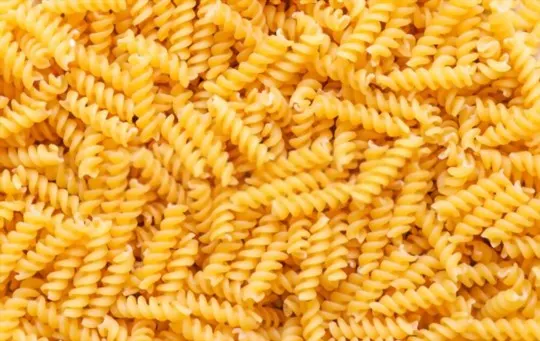
When it comes to pairing with pesto, few other shapes compare to Fusilli.
These spiraled noodles are perfect for capturing even the chunkiest pestos in their ridges and swirls.
If you can find Fusilli Bucati, you get even more flavor thanks to its extra-long length.
Because of its twists and curves, Fusilli holds onto sauce wonderfully, making it a natural choice for rich sauces like pesto — especially if you’re throwing in some cheese or vegetables too.
2. Bucatini
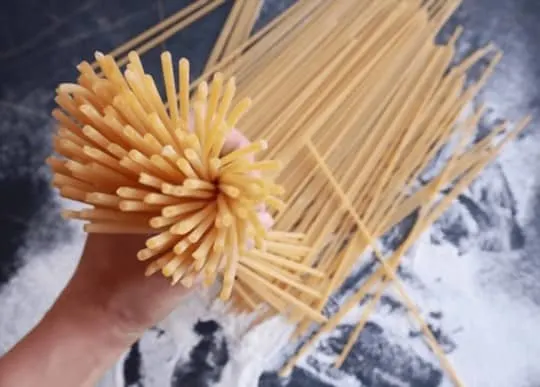
Bucatini is a thick, spaghetti-like pasta with a hollow center.
It’s great for pairing with pesto because it captures the sauce on both the outside of the noodle and in its center.
To make it even better, Bucatini is slightly thicker than regular spaghetti, so it can hold even more pesto.
Bucatini works especially well when you’re making a classic basil pesto as its larger size allows it to hold more of the sauce.
This shape of pasta is also known as perciatelli and is sometimes referred to as “hollow spaghetti”.
Try adding some crunchy texture to your dish by topping your Bucatini with Parmesan cheese or toasted pine nuts.
3. Capellini
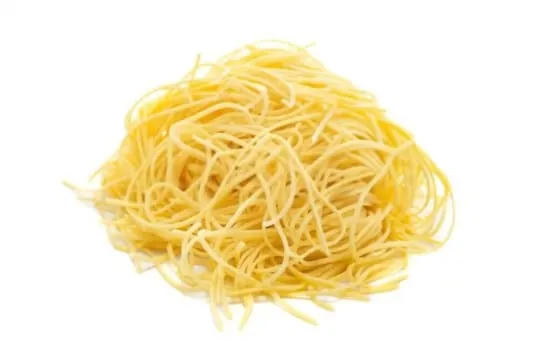
Capellini, also known as angel hair pasta, is named for its delicate capellini threads that are much thinner than other types of pasta.
The thinness ensures that it absorbs the flavors and colors of sauces more thoroughly than thicker cuts.
Plus, it requires less cooking time, so it’s a great option if you’re short on time.
Capellini is a great choice when making homemade pesto sauce because the thinness means the pesto clings to it perfectly, making each bite full of flavor and texture.
Be sure to reserve some of the starchy cooking liquid to add later on before serving.
This will bring out the depth and richness in the sauce while keeping everything perfectly moist.
4. Spaghettini
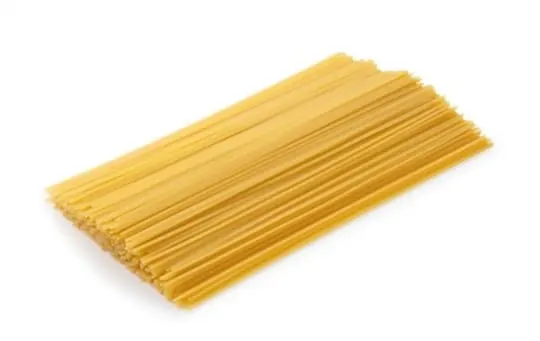
Spaghettini is a thinner version of spaghetti.
It is made with long strands of pasta that are thinner than regular spaghetti but thicker than capellini (angel hair pasta).
This type of spaghetti is often used in dishes that require a lighter texture, such as pesto or marinara sauces.
It pairs best with lighter sauces like pesto, vinaigrette, or light tomato sauce.
Spaghettini is also great for cold pasta salads or topped off with some grated Parmesan cheese.
As with all types of pastas, its flavor comes through best when it’s cooked al dente – meaning nearly “done” with a slight firmness as opposed to soft and mushy.
5. Fettuccine
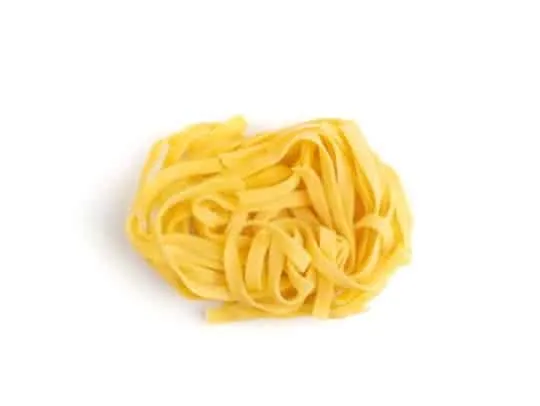
Fettuccine is a classic noodle which is often used in Italian recipes, including the famous Alfredo sauce.
This flat noodle has wide strips, and it’s best cooked al dente (very slightly undercooked).
The shape and texture of Fettuccine creates the perfect surface for pesto to stick on, so it’s great for complementing the sauce.
Fettuccine noodles are usually sold in packages that are 12 ounces or 1 pound, but look out for specialty brands that also offer gluten-free or vegan options.
To cook Fettuccine pasta with pesto, toss cooked noodles with pesto until noodles are thoroughly coated and serve hot.
6. Linguine
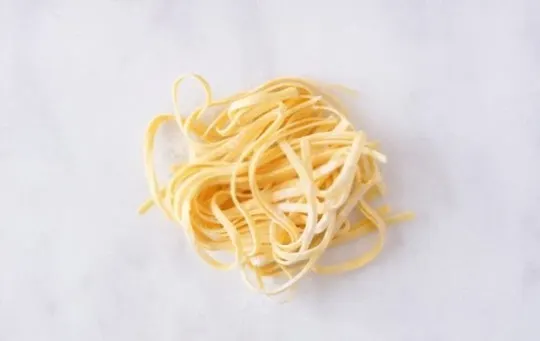
Linguine is a type of pasta traditionally made with egg and flour, similar to fettuccine.
It has a thin, flat shape and ranges in size from very thin (linguettine) to wider varieties.
This pasta is well suited for dishes featuring pesto as its long strands are able to tightly cling to the sauce and it also holds upop better under baking than some other varieties of pasta.
Linguine can be found in most grocery stores or specialty Italian markets.
Try using it for a robust pesto dish served with roasted vegetables, cherry tomatoes, feta cheese and fresh herbs.
Delicious.
7. Farfalle
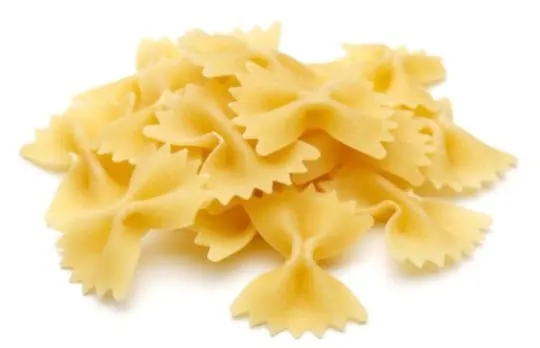
Farfalle, commonly referred to as bow-tie pasta, is a great choice for a pesto-based dish.
Its smooth edges and bow shape allow it to easily grab onto the pesto sauce and hold onto it tightly until you’re ready to enjoy it.
Farfalle is available in different sizes, so you can find the shape that best suits your dish.
When used with pesto, farfalle offers a delightful combination of textures that will delight your taste buds.
8. Trofie
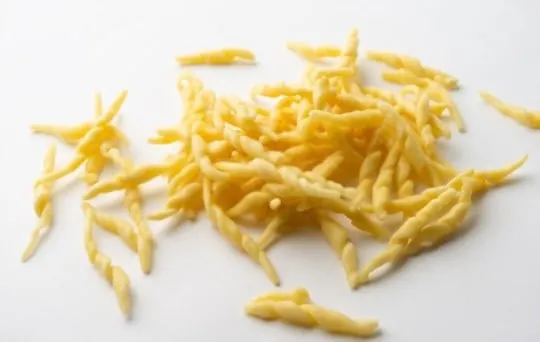
Trofie is a traditional pasta from the Italian region of Liguria.
This type of paste is best served with pesto, due to its shape and texture.
The twisted spiral shape of Trofie gives each bite a unique flavor as the sauce envelops all the spirals.
It’s easy to prepare and goes well with vegetables like spinach, zucchini or potatoes.
For a true Italian experience, top it off with cheese for an extra layer of flavor and texture.
If you’re looking for something a bit different, give this twisty pasta a try.
9. Tortiglioni
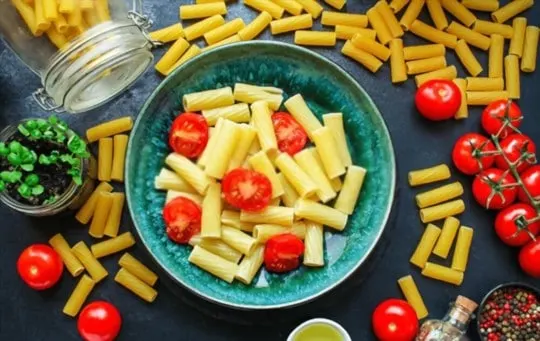
Tortiglioni are short, ridged pasta tubes with a hollow centre.
They are traditionally made in Southern and Central Italy, although exported all over the world.
A great match for pesto sauce, Tortiglioni noodles have a complex texture that absorbs the flavours of the pesto for a truly delicious dish.
They are also slightly larger than traditional penne so provide a great bite.
Simply pair Tortiglioni with your favourite pesto sauce and serve with a sprinkling of Parmesan cheese to enjoy a wonderful Italian delicacy.
10. Orecchiette
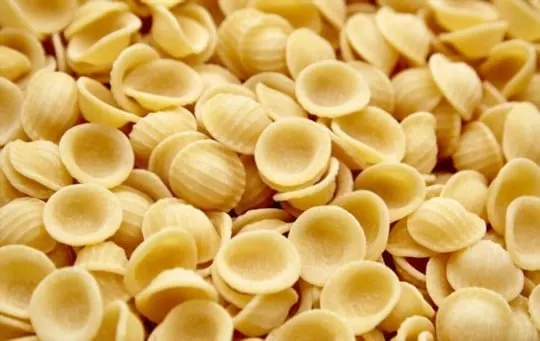
Popular in southern Italy, orecchiette, which translates to “little ears”, is a type of pasta traditionally served with thick sauces like pesto.
It can also be enjoyed with lighter sauces like olive oil and garlic, and is a great addition to salads and soups.
Orecchiette can be found in Italian delicatessens and specialty markets; it’s also often available online.
For the best results when making pesto pasta, make sure to reserve some cooking water from the pot so that you can thin out your sauce if need be during preparation.
Conclusion
When it comes to choosing the best type of pasta for a pesto sauce, there are a variety of options available.
The most popular types of pasta used include long strand varieties such as spaghetti, fettuccine and linguine.
Short shape varieties like farfalle (bow-tie), penne, fusilli and rigatoni also pair well with pesto.
To boost flavor, you can add semi-hard cheese like Parmesan or Pecorino Romano to your dish.
Additionally, adding other ingredients such as nuts, garlic or crushed red pepper flakes can further enhance your pesto-based pasta dish.
When tasting your dish for flavor, consider all the elements that come together to make a balanced meal — texture from the noodles, color from the sauce and creaminess from the cheese.
Whether you are going for classic dishes or creating something unique by incorporating other ingredients into your pesto recipe, this guide provides some great tips for making flavorful and delicious meals every time.
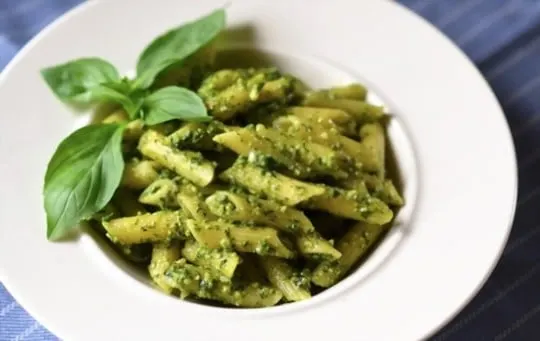
The 10 BEST Types of Pasta for Pesto
Ingredients
- 1. Fusilli
- 2. Bucatini
- 3. Capellini
- 4. Spaghettini
- 5. Fettuccine
- 6. Linguine
- 7. Farfalle
- 8. Trofie
- 9. Tortiglioni
- 10. Orecchiette
Instructions
- Choose your favorite pick from the comprehensive selection provided in this article.
- Gather all of the essential ingredients required for the recipe.
- Prepare a delectable dish with your selected pick in under 30 minutes, following the provided instructions.

Andrew Gray is a seasoned food writer and blogger with a wealth of experience in the restaurant and catering industries. With a passion for all things delicious, Andrew has honed his culinary expertise through his work as a personal chef and caterer.
His love for food led him to venture into food writing, where he has contributed to various online publications, sharing his knowledge and insights on the culinary world. As the proud owner of AmericasRestaurant.com, Andrew covers a wide range of topics, including recipes, restaurant reviews, product recommendations, and culinary tips.
Through his website, he aims to inspire and educate fellow food enthusiasts, offering a comprehensive resource for all things food-related.

Leave a comment